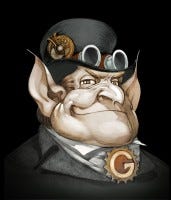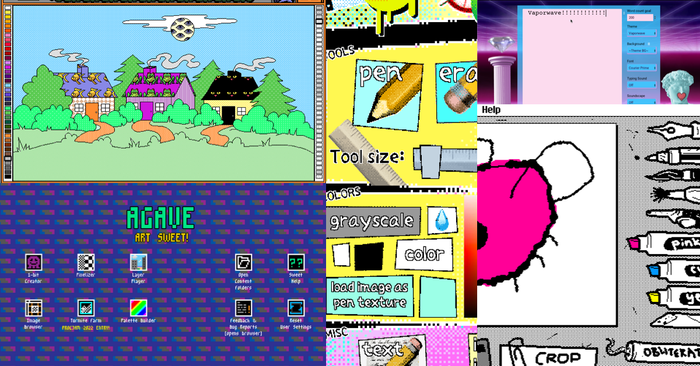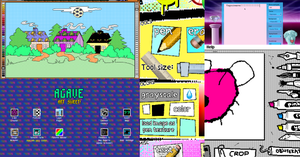
Featured Blog | This community-written post highlights the best of what the game industry has to offer. Read more like it on the Game Developer Blogs.
Two years ago we released our digital board game Gremlins, Inc. in Steam Early Access. Today, we look back at this period and share our data about regions and languages used by the community.

In October 2015, our studio Charlie Oscar released a digital board game Gremlins, Inc. While almost everyone in the team already shipped products before while working at other studios, this has been the first game of us working together as one team. The data below is based on the sales on 4 platforms: Steam, Humble, Sonkwo and GOG. The numbers are based on copies sold, not revenue collected, as we wanted to measure the audience – rather than the economic impact of a particular region.
EARLY ACCESS
The game has been in Early Access for a bit under 5 months, with over 20 feature and content updates. We started with 5 languages (English, German, French, Spanish, Russian) and sold the game at $9.99 (here and later, prices for US region are used; we adjust based on every region), selling a bit under 10K ocpies across all platforms.
In terms of localization content, the game has quite a few rules and card descriptions, as well as multi-linguage communication tools (e.g. a phrase "Good game!" is shown to each player in their own language), which at that time came to about 30K words per language.
Here's the distribution of sales by regions at the end of the Early Access period:

RUSSIA – 34%
USA – 20%
FRANCE – 8%
GERMANY – 6%
UK – 5%
For future reference: CHINA was 2%; JAPAN was 1%; and KOREA was 0.1%.
Takeaway:
* If you game has meaningful content (rules, dialogues, anything that is a part of UX), you cannot reach Asian customers unless you support the local languages – see changes in sales to these regions in the following periods;
* We were able to enjoy very strong support from RUSSIA because Russian is one of the native languages of our dev team, and all of our communication has been bi-lingual (EN/RU) from day one – every forum announcement, every patch note, every Steam announcement, all were released in 2 languages at the same time. We're pretty sure that if our team had native French, for example, then we would have been able to double or triple the share of FRANCE just as well.
THE FIRST QUARTER OF FULL RELEASE
Once the game transitioned out of Early Access, we increased the price to $14.99 and added 7 more languages: Japanese, Simplified Chinese, Polish, Czech, Italian, Brazilian-Portuguese and Ukrainian.
The sales in the first quarter following the full release (and new languages available in the game) changed accordingly:

USA – 20% (same share as in Early Access)
RUSSIA – 20% (a noticable dip thanks to increase from other regions)
CHINA – 16% (an increase of 8 times – due to localization becoming available)
JAPAN – 5% (an increase of 5 times – due to localization becoming available)
GERMANY / FRANCE – 5% each (more or less same share as before)
Takeaway:
* already at this point, after just one quarter of sales in the full release mode, we sold enough to China and Japan to pay for those localizations; there is no doubt for us, that both Chinese and Japanese languages must be no.2-3 for dev team's priorities, following English;
* sales to other regions where we invested into full localization have been lacking: Brazil, Czech Republic and Poland were all under 1%, with only Ukraine climing to the 2% share (but see more on Ukraine below).
THE REST OF 2016
The following two quarters of 2016 reflected the dynamics that we saw as we transitioned from 5 languages to 12, and from Early Access to full release: China was on the rise (for us as well as for everyone else on Steam, I suppose – additionally, we launched on Sonkwo, a Chinese platform offering Steam keys, around the same time, which added more exposure and more sales in the region); while a few other "language-dependent regions" also kept strong. Here's the breakdown of sales during Q3-Q4 2016:

CHINA – 23%
RUSSIA – 22%
USA – 16%
JAPAN – 7%
FRANCE / GERMANY – 5% each
The trends from the first quarter of full release continued to develop: RUSSIA, where we provided 24/7 community support and kept the engagement high, performed like a star; while CHINA grew from 16% of sales to 23% of sales; and JAPAN exceeded both FRANCE and GERMANY, becoming no.4 region.
Looking at the chart above, and considering that we supported 12 languages already, we wrote off any new languages for the foreseaable future – especially because there was no demand on the forums. No one was asking for, say, Korean (0.1% of sales) and only 2 people were asking for Turkish, while a lot more were saying "thanks!" for supporting Ukrainian, that yielded under 2% of sales.
CHINESE NEW YEAR 2017
With the arrival of 2017, we transitioned to the seasonal format of updating the game: every three months, we would introduce new music, new in-game visuals and a new pack of in-game items (all of that is free to users) celebrating the season, and giving players a good reason to come back to the game and try it all out.
The one irregular event that we agreed to do, was Chinese New Year 2017 at the end of January – based on the request of our Chinese partner Sonkwo, and based on the continued strength of sales to China. Simply put, we felt hat with so many users from China buying the game, we owe them something special for the holiday that's more important than Christmas over in China. And so we created a special Chinese New Year update with new, thematic music and visuals, as well as a special in-game item that was granted for free to all users just during that period.

And here's the sales for the entire Q1 2017 (take a seat):

CHINA – 47%
RUSSIA – 12%
USA – 10%
JAPAN – 6%
FRANCE / GERMANY – 3% each
Yes, you probably guessed it: the shares of Russia, USA, etc. remained the same in relation to each other, while Chinese sales grew to an incredible half of all of our sales that quatrer! Back at the end of 2016, we were only concerned with saying "thank you" to all the Chinese users, and expected maybe a 10% hike in sales, just because Chinese players would have tons of free time during that holiday. The reality has been a growth of more than 100% – across all the platforms where we sold the game.
KOREAN LANGUAGE
One of the languages that we originally wanted to try, but could not find anyone to translate into, was Korean. We asked every developer we knew, but scored no leads. We finally found a person who was recommended by a software company of our friends, but that person didn't know what "Steam" is. And so we put this aside, until later in 2017 our friends at TaleWorlds (of Mount & Blade fame) asked us why we're not supporting Korean, which is one of their Top-10 languages (at that time on Gremlins, Inc. it's been at the same level of 0.1% sales as since its original launch).
With this information in hand, we connected to the localization team that worked on Mount & Blade, and prepared full Korean localization for September 2017 update of the game. The result? Since that update, sales to Korea went from 0.1% to full 3%, firmly wedging the region between France and Germany.

Takeaway:
We think that we missed quite a lot of sales by not adding Korean language to the list of localizations launched day one in full release, back in 2016. It looks like the potential audience is equal to that of GERMANY and FRANCE.
18 MONTHS IN FULL RELEASE
Looking back across the whole period since the game exited Early Access in March 2016, so that all 12 languages (and later, Korean – the 13th) are supposted in this time, here's the Top-10 by units, across all the four platforms where we sold the game:

CHINA – 31%
RUSSIA – 16%
USA – 15%
JAPAN – 7%
GERMANY – 4%
FRANCE – 4%
UK – 3%
CANADA – 2%
UKRAINE – 2%
AUSTRALIA – 2%
CHINA has been a lifesaver, while JAPAN represents the power of both GERMANY and FRANCE combined. If you can only support a few languages due to the budget constraints, and your game's genre is similar to ours – do English and Simplified Chinese; then Japanese, as at least for our genre / price category, it beats any European language.
As to RUSSIA, it is a complicated matter. Yes, it's been the source of our great support and motivation. The Russian community holds the credit for, perhaps, 2/3 of all improvements and bug reporting. But we cannot say that it's something other teams can replicate without having native Russian speakers on board, and not only among community management, but also among actual dev team, so that the communication is fully bi-lingual. And again, we think that for other teams, it can be some other languages, too – e.g. French or German – depending on the native language of the dev team – that would occupy the no. 2 spot.
SALES TO REGIONS VS ACTUAL USE
A while ago when we posted an update about sales and regions of Gremlins, Inc. on Reddit, people asked if we have a way of checking not only which regions the sales happen to, but also which language people actually use in the game. In April 2016, we added to the game's server a simple anonymous tool that would record the language chosen by users in the game, after their second login.
As we do not store a match between IP/customer ID and the language chosen, we now have an idea of how many people in the game use Polish (for example) as their game language – but we cannot tell how many customers from Poland use Polish. So if 10 people from Poland use English and 10 people from USA use Polish, we would see a 1:1 match between sales to Poland and the use of Polish language – so I'm writing this here as a disclaimer against taking the below data too seriously.
Now, when we took 18 months of data of language use and 18 months of sales, here's what we discovered:

You can already spot some things from the chart above – for example, more users play in Russian than we have sales to Russia; and fewer users play in Simplified Chinese, than we have sales to China; but since the audience differs that much between the languages, let's look at this chart at another angle –

Let's start with the "conservative" regions: there's a 97% match between the number of sales to France and Czech Republic, and the number of players who choose to play in these languages, respectively. It perhaps comes as no surprise to those familiar with French market, where a good localization is not a luxury but a necessity; still, we were surprised about Czech Republic – it's not often that you see games support Czech language, and yet our evidence shows that when users in CZ have a choice of playing in their native language, they do exercise it.
Now, Poland: what we're seeing here is that (a) players actually do play in Polish language, despite the common opinion that Polish players speak English so well that they don't need localization; and (b) there's probably quite a few Polish-speaking players who reside, and buy from, outside of Poland (e.g. from UK, Canada, USA, Germany). So that a good Polish localization improves user experience of more people, than you would actuall have direct sales into Poland.
As to Spain, it's quite likely that the 30% positive difference between number of users and number of sales is due to Latin America and USA, where some players would choose continental Spanish over English in the settings of the game.
About Ukraine: we see that the game has 60% less people who play in Ukrainian language, than those who buy from Ukraine. We think that it's also supported by the fact that we have significantly more users with Russian language than sales into Russia. It seems that while we got a lot of positive comments on our decision to localize into Ukrainian, the localization itself was actually not that necessary since less than half of users from that region took advantage of it.
Similarly, while we did not have a single negative comment on the quality of our localization into Brazilian-Portuguese, if we are to trust our data – then 30% of users from Brazil are not really using it, switching either to English or continental Spanish.
Finally, Russia: not only is it a significant part of the game's overall audience (no.2. at 16%), but there's even more people who use Russian as their in-game language. For sure, this is a part of Ukraine, but also Kazakhstan, Belarus, some proportion of players from the Baltics, as well as – like with Poland – players who use Russian as their language of choice, but for whatever reasons currently reside outside of the country, and purchsase to accounts registered in different (higher-priced) regions.
SUMMARY
If you're going to localize your game into any language other than English, go for Simplified Chinese;
If you have budget for more language, consider that Japanese brought us as many sales as Germany and France combined – at the same time, the Japanese currency is stable, and games prices are comparable to EU/US;
The fact that users don't complain about the lack of a particular language, does not necessarily mean that this language is not in demand; as we discovered with Korean, we missed the opportunity to increase our audience there by ignoring that language at launch – but now that we have Korean store page and in-game language, we are getting positive comments from that region;
Localizations into Brazilian-Portuguese, Italian, Spanish, Polish and Czech did not work out for us because of the small share of sales into these regions; it still may work for you if you have a bigger product; our sales are around 150K copies at the moment; if they were 1 million, then all these localizations would pay for themselves, making them worthwhile;
Bear in mind that localization into Ukrainian makes sense for less than 1/2 of Ukraine's customer base; perhaps this will change with the new generation, but it's not there at this time; we have 2 Ukraine-born developers in our team; one plays games in English, another – in Russian; perhaps for Ukrainian teams, supporting Ukrainian language makes sense as it's free and easy to support, but I cannot recommend this language as a tool to boost sales otherwise;
In the end, our choice of languages to support with our next game, Spire of Sorcery, is as follows:
English
Simplified Chinese
Russian
Japanese
French
Korean
German
We hope that this information has been of help in defining your localization strategy. About 70% of players of Gremlins, Inc. play in language other than English. As such, it's localizing the game into multiple languages that made it possible for us to access the global market, and it's that access (and resulting long tail of sales) that still enables us to continue adding content to the game more than two years after its launch.
Read more about:
Featured BlogsAbout the Author(s)
You May Also Like








